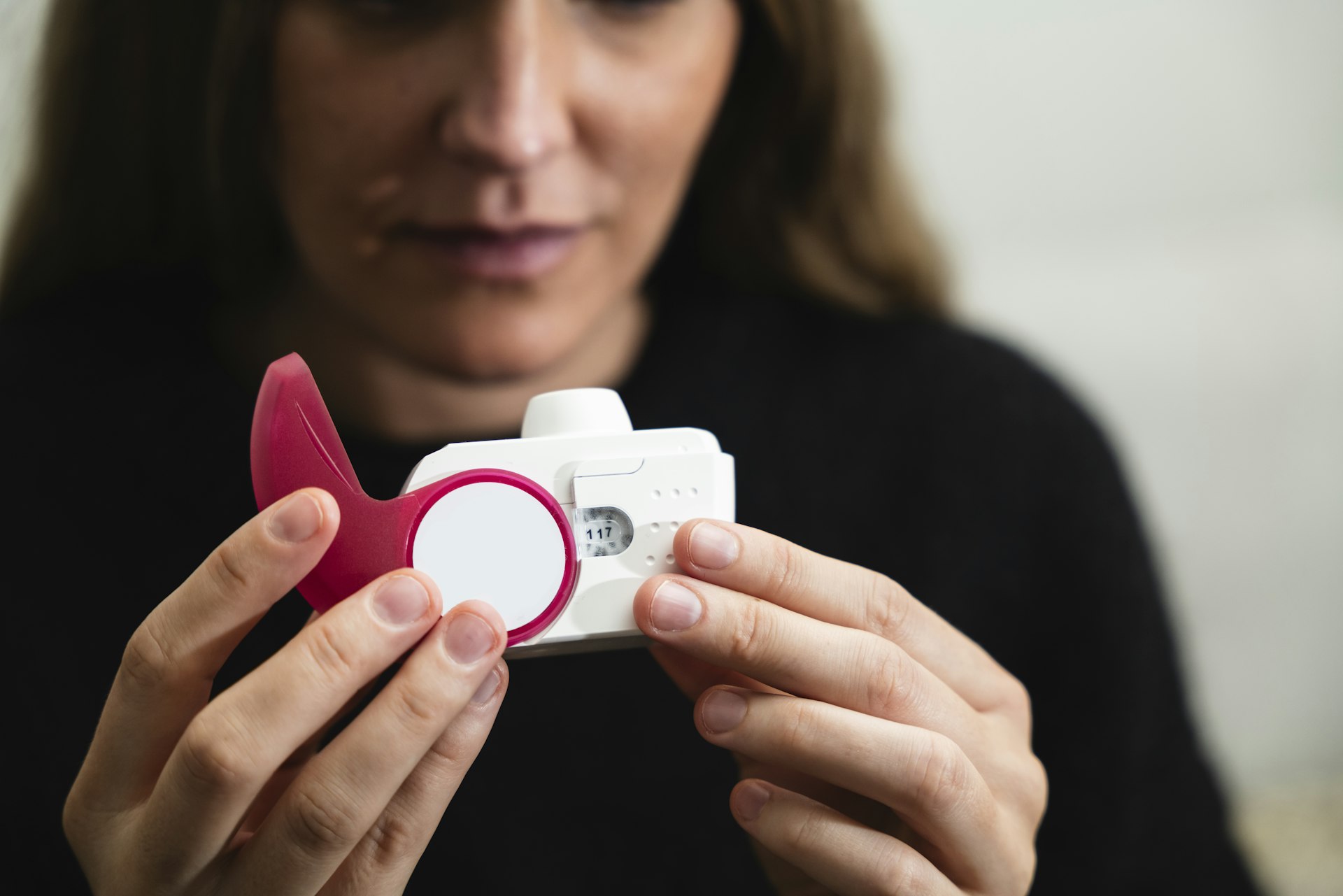Revolutionizing Healthcare: Wearable Technology for Remote Health Monitoring in 2025


Photo by CNordic Nordic on Unsplash
Introduction: The Transformation of Remote Health Monitoring
Healthcare is experiencing unprecedented growth in wearable technology , particularly in remote health monitoring. The convergence of advanced sensors, artificial intelligence (AI), and cloud platforms is reshaping how patients and providers interact, diagnose, and manage health conditions. These innovations offer real-time data, earlier intervention, and greater personalization, making remote healthcare more accessible and effective than ever before [1] .

Photo by Mezidi Zineb on Unsplash
1. Smarter Wearable Devices: Beyond Step Counters
Modern wearable health devices have evolved far beyond basic activity trackers. In 2025, devices such as smartwatches, biosensors, rings, and patch monitors provide continuous monitoring of multiple vital signs, including heart rate, respiratory rate, blood glucose, and early indicators of infection [1] . For example:
- Oura Ring : Tracks sleep, activity, heart rate, and body temperature, offering actionable insights into sleep quality and readiness for activity [3] .
- Empatica Embrace : FDA-approved smartwatch for epilepsy, sends seizure alerts to caregivers and monitors electrodermal activity for early warning [3] .
- Continuous Glucose Monitors (CGM) : Devices like Dexcom G7 and Abbott FreeStyle Libre 3 provide real-time glucose data, helping diabetic patients manage their condition without fingersticks [3] .
- WHOOP Strap : Tracks heart rate variability, sleep, and strain to support preventive care and chronic disease management [3] .
Newer models, including the Huawei Band 10 and Samsung Galaxy Ring , focus on advanced features like arrhythmia analysis, sleep environment reports, and HRV monitoring, with long battery life and broad compatibility [4] .
2. AI-Powered Monitoring: From Data Collection to Predictive Analytics
The integration of artificial intelligence into remote patient monitoring (RPM) marks a major leap forward. AI algorithms can analyze vast data streams from wearables to detect trends, predict health events, and trigger alerts for both patients and clinicians [1] . This enhances early intervention, especially for chronic conditions such as cardiovascular disease and diabetes.
Key benefits include:
- Early detection of anomalies, such as irregular heartbeats or potential seizures, prompting immediate action [5] .
- Personalized health recommendations based on real-time analytics, improving prevention strategies and supporting medication adherence [2] .
- Integration of behavioral data (e.g., sleep, stress, nutrition) for holistic patient profiles and targeted interventions [2] .
For implementation, many RPM platforms now feature mobile apps that sync seamlessly with wearable devices and securely transmit patient data to healthcare providers. This enables clinicians to act proactively, reducing hospitalizations and improving patient outcomes [5] .
3. Integrated Patient Tracking Systems and Data Security
Effective remote monitoring requires robust platforms to manage, store, and review health data. In 2025, cloud-based systems are standard, allowing for secure, real-time data access from multiple devices [1] . These platforms comply with global health data regulations, ensuring privacy and security for sensitive health information.
Examples include hospital-based RPM programs and telehealth services that leverage integrated dashboards for continuous patient oversight. Patients benefit from reduced clinic visits, while providers gain comprehensive views of patient health trends and risk factors.
For those seeking to implement RPM solutions, start by:
- Consulting with your healthcare provider about recommended wearable devices compatible with their systems.
- Exploring authorized RPM platforms or telehealth services through your hospital or insurance network.
- Reviewing device specifications, privacy policies, and data sharing options before enrollment.
4. Real-World Applications and Case Studies
Remote health monitoring is already delivering measurable benefits across diverse patient populations:
- Chronic disease management : Patients with heart conditions, diabetes, or epilepsy use wearables for continuous monitoring, reducing emergency visits and improving medication adherence [3] .
- Preventive care : Fitness trackers and smart rings assist in identifying lifestyle patterns that contribute to better sleep, lower stress, and improved activity levels [1] .
- Remote cancer detection : Wearable bandage and microneedle sensors are being developed to detect biomarkers for rapid skin melanoma screening, offering new possibilities for early intervention [2] .
Healthcare providers report that RPM programs lead to higher patient engagement and satisfaction, while research shows significant reductions in hospital readmissions and healthcare costs [5] .
5. How to Access Wearable Remote Monitoring Solutions
Individuals interested in remote health monitoring can take these steps:
- Discuss your health goals and needs with your physician to identify the most suitable wearable devices for your condition.
- Research FDA-approved wearables and compare features, accuracy, and compatibility with your provider’s RPM system. Trusted brands include Oura, Empatica, Dexcom, Abbott, Samsung, and Huawei.
- Check with your health insurance provider to see if remote monitoring devices and telehealth services are covered. Many insurers now offer RPM programs for chronic disease management.
- For device purchases, visit official company websites or authorized retailers. Always review device privacy policies and opt for platforms with robust data security measures.
- To access RPM services through a hospital, inquire about available programs or search for “remote patient monitoring” on the hospital’s official website. You can also contact your local healthcare system or insurance portal for guidance.
If you require additional support, consider reaching out to national health organizations, such as the American Heart Association or Diabetes Association, for resources and device recommendations. These organizations regularly update guidance on remote health monitoring and wearable technology adoption.
6. Challenges and Solutions
While wearable technology offers numerous advantages, users and providers should be aware of potential challenges:
- Data privacy : Protecting sensitive health information is paramount. Choose devices and platforms that comply with HIPAA and other health data standards. Always read privacy policies carefully before sharing data.
- Device accuracy : Not all wearables are created equal. Select devices validated by clinical research and regulatory approval for medical use.
- Integration : For seamless data sharing, use devices compatible with your provider’s RPM system or recommended telehealth platform.
Solutions include ongoing technical support, regular device calibration, and proactive patient education on using wearables effectively.
7. Alternative Approaches to Remote Health Monitoring
Beyond wearables, remote health monitoring may include smartphone-based apps, home-based medical equipment, and telehealth consultations. Some patients opt for hybrid approaches, combining in-person care with digital monitoring for comprehensive health management.
If you encounter difficulty accessing wearable devices, consider starting with mobile health apps or discussing alternative RPM options with your healthcare provider. Many hospitals and clinics offer device loan programs or subsidized access through insurance partnerships.
Summary and Key Takeaways
Wearable technology is revolutionizing remote health monitoring, empowering patients and providers with real-time data, AI-driven insights, and integrated care platforms. By following best practices for device selection, data security, and provider collaboration, individuals can leverage these innovations for better health outcomes in 2025 and beyond.
References
- [1] Continental Hospitals (2025). Remote patient monitoring: what’s changing in 2025.
- [2] Liao, Y. et al. (2019). The Future of Wearable Technologies and Remote Monitoring in Health Care.
- [3] Sermo (2025). Wearable health devices: Examples & 2025 technology.
- [4] Thryve Health (2025). Best Wearable Health Monitoring Devices to Watch in 2025.
- [5] HealthSnap (2025). AI in Remote Patient Monitoring: The Top 4 Use Cases in 2025.






